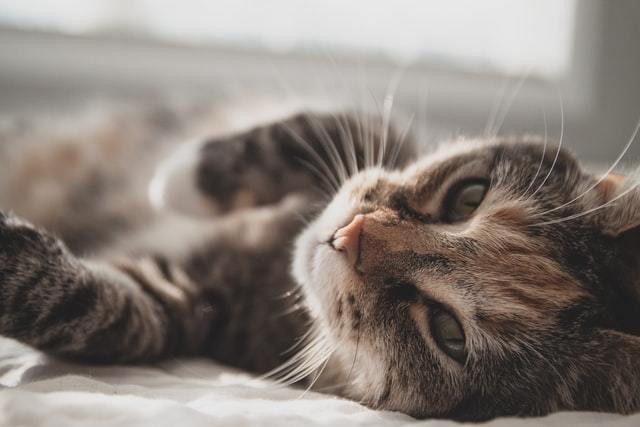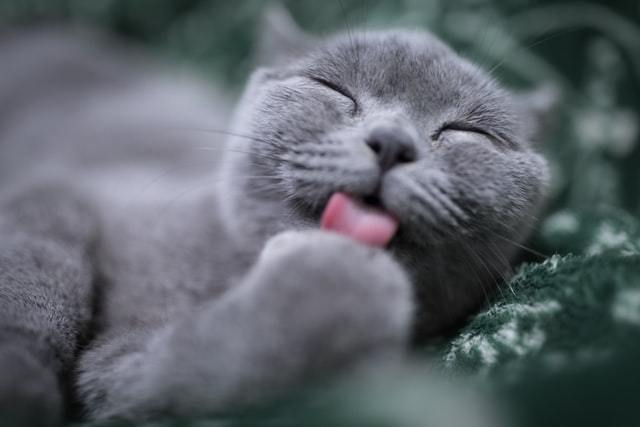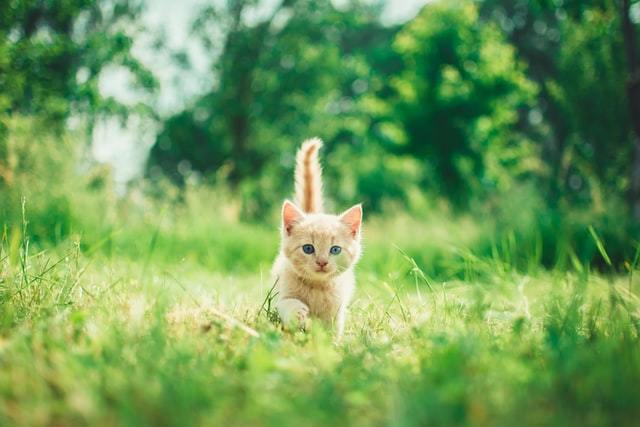Article at a glance
Feline hip dysplasia is a progressive and chronic orthopaedic condition that affects cats of all breeds.
- Signs can include a reluctance to move about and your cat may be in pain when touched.
- X-rays are required to confirm the diagnosis. These will be carried out under a general anaesthetic.
- Most cats can live relatively normal lives once on the right treatment plan.
Hip Dysplasia is a disease we tend to associate more with large breed dogs such as German Shepherds. Indeed, it is much less common in the cat than it is in the dog. This is because cats have not been inbred as intensively as their canine cousins and are naturally a lot smaller.
What Is Hip Dysplasia in Cats?
Hip Dysplasia in cats occurs when the ball and socket of the hip joint are not in alignment. Over time, this causes the bones to rub against each other and will lead to arthritis. Cats experience both pain and mobility issues.
While it is uncertain how prevalent hip dysplasia is, this paper published by Keller et al found that 6.6% of their study population were affected.
Causes
This is a condition that is passed on in the genes from a parent cat. Some breeds appear to be more susceptible, such as the Maine Coon. A study conducted by the Department of Orthopaedic Surgery in the Indiana School of Medicine found that about half will be affected in both hips.
Signs and Symptoms
Unsurprisingly, hip dysplasia frequently goes unnoticed. Cats are masters at masking their symptoms and owners will miss the subtle signs of early hip dysplasia. Signs can include:
- A reluctance to run and jump
- An expression of pain if the hip joint is touched. Cats may hiss or even bite if in a lot of pain
- Muscle wasting, whereby the muscle around the hip shrinks and the bone becomes more visible
- Limping or an uneven gait
- Excessive grooming over the joints
These signs are often confused with other conditions, such as generalised arthritis or a muscle strain. Thus, an x-ray of the hip joints is needed to confirm the suspicion. Typically, this disease is easily recognised by an experienced radiographer.
How to Treat FHD?
Unfortunately, treatment options are quite limited when it comes to hip dysplasia in cats. Advanced cases can be treated surgically. The two options available are a Femoral Head and Neck Excision or a Total Hip Replacement. These are specialised surgeries usually performed by an orthopaedic surgeon. As such, they can be costly.
Most cats are managed medically. Long-term, anti-inflammatories and pain relief can help to keep symptoms in check and allow a cat to live a relatively normal life. The aim is to provide a good quality of life. Affected cats should be able to move about with relative ease and their pain should be under control. Some owners may find it difficult to medicate their cats. This is a great read which discusses how to medicate your kitty orally.
Adjunctive therapies such as acupuncture, massage, hydrotherapy and physiotherapy are an option for some. Of course, not every cat will tolerate these therapies!
Home Remedies
While we cannot cure hip dysplasia, there are lots of things we can do at home to alleviate signs. It may even be possible to slow down progression of the disease.
Keeping your cat slim is an excellent way to reduce pressure on their joints. It may also prolong the time it takes for hip dysplasia to progress. Ensuring your cat keep active is equally important. Similarly, keep your kitty warm in the winter to prevent their joints from seizing up.
We should also offer joint supplements which contain active ingredients such as Glucosamine and Chondroitin Sulphate in sufficient amounts. These ingredients have been clinically proven to prevent cartilage loss and reduce joint inflammation.
How to Prevent Hip Dysplasia in Cats?
Ultimately, the only real way to prevent hip dysplasia from occurring is to stop breeding from affected felines. This means screening breeding parents with x-rays and neutering those who are found to have hip dysplasia. As this can be costly, it is not commonly done in practice.
Why we Recommend This Hip ‘n' Joint Vitalize Support
The Scruffy Paws Hip ‘n’ Joint Vitalize 5 in 1 Full Spectrum Support is a product aimed at those with joint disease. The tasty beef-flavoured liquid can be squirted into your cat’s mouth or added to their food. As it is so delicious, most cats think they are being given a treat.
As well as the joint supportive Glucosamine and Chondroitin Sulphate discussed above, this liquid contains MSM, Hyaluronic Acid and Taurine.
- MSM (Methylsulfonylmethane) has been proven to reduce inflammation within the body. It contains sulphur which helps contribute to healthy bones and joints. It is generally accepted that MSM works best in conjunction with other nutraceuticals such as Glucosamine.
- Hyaluronic Acid helps to lubricate and cushion the hip joints. It is well-recognised as a treatment of arthritis in human medicine and is often injected into painful joints.
- Taurine is an essential amino acid that cats are unable to manufacture themselves. It supports your cat’s overall health and is required for optimal immune protection and heart muscle function.
Final Thoughts
Cat hip dysplasia can be a debilitating condition but owners have many options for managing the disease. As signs are not easily detected, any mild symptoms warrant a vet visit. If hip dysplasia is suspected, an x-ray can quickly rule it in or out. Remember, if your cat has hip dysplasia, they should not be used for breeding. Contact the breeder to make them aware, so they can have all related cats tested.
- We should take a multi-modal approach to the treatment of hip dysplasia. This involves keeping your kitty trim and the use of daily pain relief and anti-inflammatories. We should also provide joint supplements such as
Dr. Linda Simon, BVMS, MRCVS
Veterinary surgeon,Dr. Linda Simon MVB MRCVS is a locum veterinary surgeon who has worked in London for the past 8 years. She graduated top of her class in small animal medicine from UCD, Dublin. She is currently a member of the Royal College of Veterinary Surgeons.




